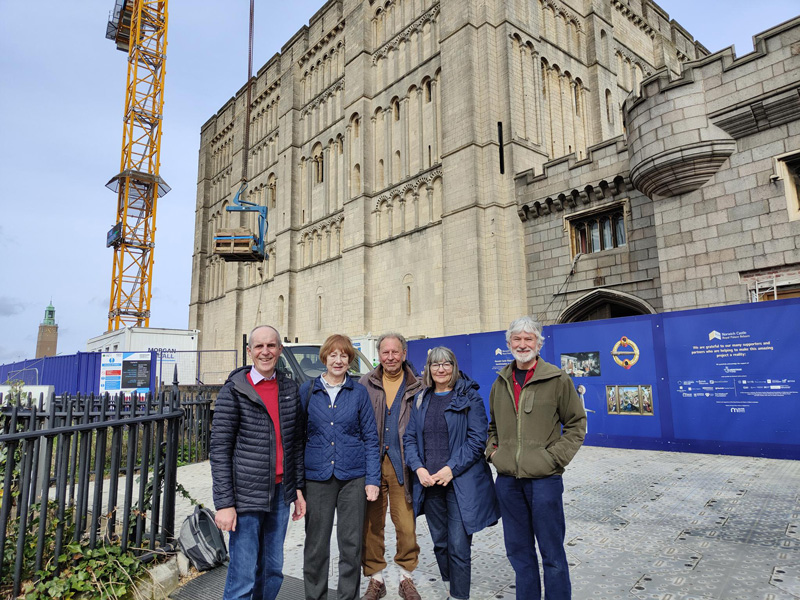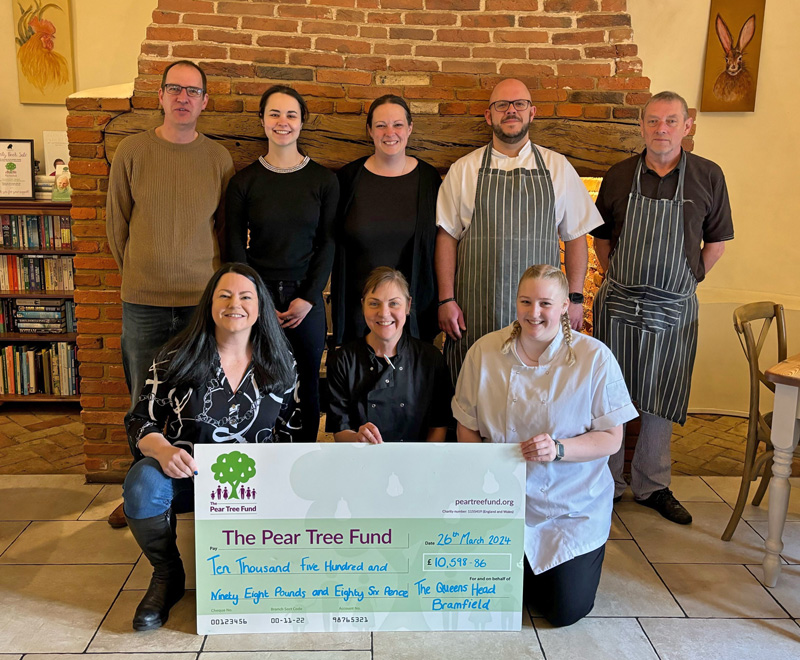Somerleyton Station is the most northerly railway station in Suffolk and is served by the Lowestoft to Norwich Wherry Line.
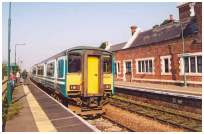 Somerleyton Railway Station
Somerleyton Railway StationThe station building was built some time after the opening of the railway in 1847 and is constructed in mock Elizabethan style similar to other buildings in the village. From the platform the Somerleyton Swing Bridge over the River Waveney can be seen. The station building is now a private house and the forecourt converted to garden.
 The White House
The White HouseWalk RouteFrom the station follow Station Road left to a sharp right bend and continue straight on along the wide track ahead through a wooded area known as the Brickfields to reach a junction with the boat yard access road. An alternative footpath route through the boat yard is also available if you wish to view the staithe.
From about 1780 Somerleyton bricks were made here until the works closed in 1939. Some notable buildings of Somerleyton brick include York and Liverpool Street railway stations and a Belgian Royal Palace. Evidence of the buildings and kiln, now demolished, and the pits where sand was dug, abound. An information board provides further details of the site. The 22 cottages at the end of the track were built between 1854 and 1875 for the workers and the staithe was constructed in order to transport the finished bricks along the river.
At the junction by the cottages turn right and follow the track up to reach the public road by a telephone box, the Duke’s Head pub can be seen to the left if required. Turn right along the roadside footway towards Somerleyton village, past the Post Office Stores and the pond at White House to reach The Green at the road junction. No 3 on The Green was the original 16th century farmhouse that led to Sir Morton Peto building the rest of the cottages when he bought the estate in 1844.
Continue straight on along the roadside footway, to the next road junction marked to Ashby and turn right, following the brick wall of the estate. Turn right along the access drive into the estate marked as the entrance for pedestrians, and walk as far as two tall pine trees.
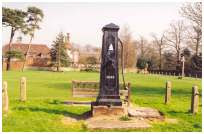 The Green
The GreenTurn off left here on a wide grassy track heading north, continuing on to reach Ashby’s St. Mary’s Church that can be seen ahead. Note the thatched roof, unusual octagonal tower on a round base and the memorial stone in the churchyard fence commemorating seven American airmen who were killed locally in the Second World War.
A short distance past the church turn right at the junction of tracks along Snake’s Lane, following the track into Lound to emerge adjacent to the Village Maid pub opposite the village pond. Turn right on the roadside footway through the village, past the Post Office and General Stores to reach the junction of Church Lane. The church is well worth a visit to view the superb decorative gilt work. Round towers are rare in Britain except in Suffolk and Norfolk where over 200 examples can be found.
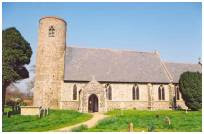 Lound Church
Lound ChurchReturn to the main road and continue straight on out of the village on Flixton Road past the speed derestriction signs, taking care of the fast approaching traffic. After 350 metres turn right on Green Lane, marked to Somerleyton 2 miles, walking the full length of the lane to reach the junction with the B1074 Blundeston Road. Views of Somerleyton Hall and the surrounding estate will be found between the trees on this next section of the walk.
Standing on the site of an earlier Jacobean manor house, the unmistakably extravagant Victorian hall was rebuilt by Sir Morton Peto between 1844 and 1851. His architect was John Thomas who also rebuilt Somerleyton’s St. Mary’s Church (except the tower) and the thirty-five thatched cottages around Somerleyton village green. Sir Francis Crossley (great grandfather of the present Lord Somerleyton) bought the Hall from Sir Morton Peto in 1863.
Turn right past the main entrance to Somerleyton Hall, taking great care as this is a very busy road and you will need to take refuge on the verge whenever vehicles approach.
 The Village Pond at Lound
The Village Pond at LoundWhere the road bends to the right near to Somerleyton Church turn off left at a stile leading to a field edge footpath. Cross another stile at the corner of the field and walk straight on along the track ahead.
The area along this track is the site of the former Wicker Well estate in the 1600s. All that remains are two cottages and a thatched barn that were outbuildings of the former mansion. After passing Wicker Well Cottages and the low part of the track by Wicker Well Lake, turn sharply up to the right at the next junction along Waddling Lane. Ignore a left turn to the railway and Somerleyton Marshes and follow the lane up to the road at Waveney Grange Farm. Turn left along Station Road to return to the start of the walk at the railway station.
Thank you for taking the time to explore this walk. We would love to hear your comments about this site and about your day out.
Please email us at [email protected]
Source and credits: www.nationalexpresseastanglia.com
Somerleyton Railway Station is served by National Express East Anglia (Train Operating Company), who operate services between Lowestoft and Norwich – Wherry Line.


